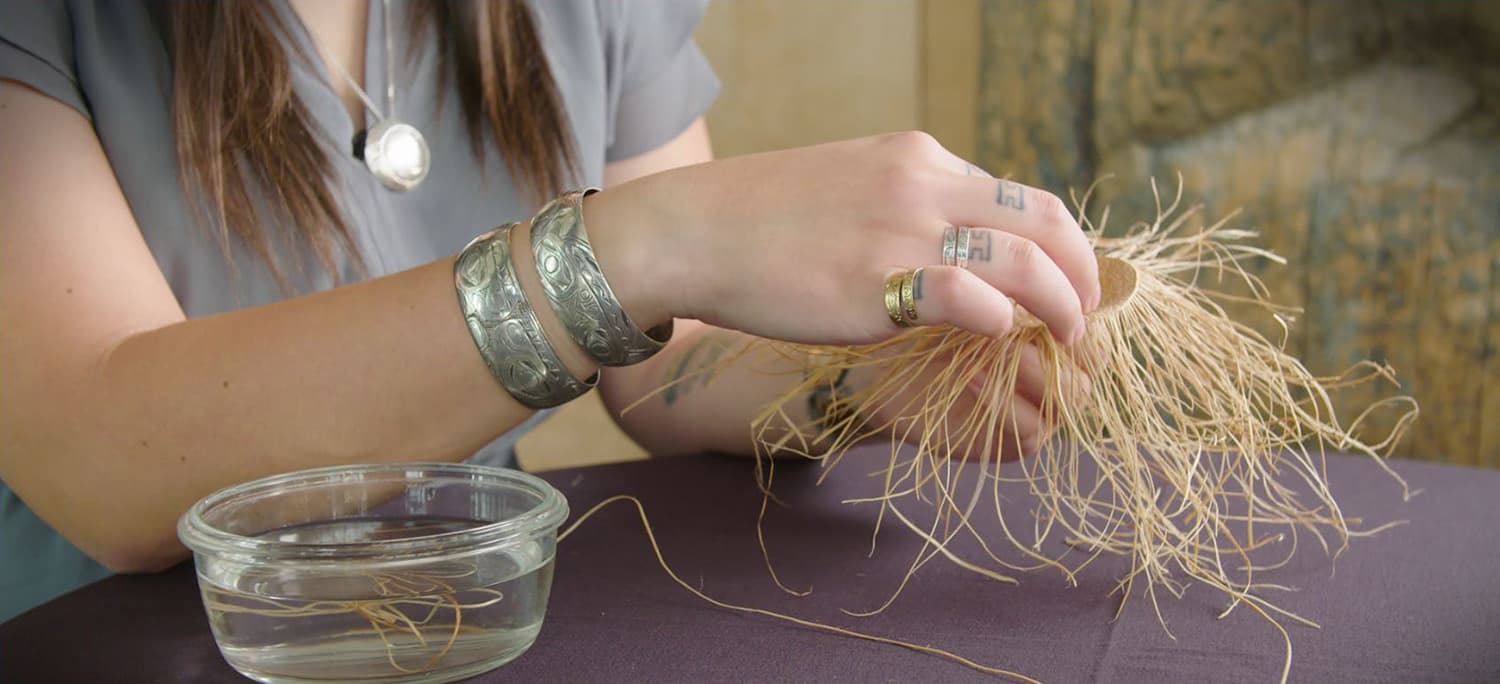What traditions do your family or community take part in? Who taught you these traditions? And why are they important to you?
Traditions are vital to many cultures. Among some Indigenous communities, traditions are passed from one generation to the next through community and family members. For example, learning how to weave may be passed down from a great-grandparent, to a grandparent, to a parent, to a child.
Each part of the process is important. For example, sourcing and gathering materials to weave conveys specific knowledge about the land, plants and animals. Weavers share stories while they work, and these can include lessons or other cultural information. Even the movement of a person’s hands — or the patterns, images and colours woven into the finished object (e.g., a basket, hat or blanket) — can contain significant information about Indigenous Nations, communities and families.
From spruce roots to baskets with a Haida weaver
Around the world, woven baskets are made from many materials. In North America, the materials used depend on the plants available to the weaver. Black ash, mountain goat wool, corn husks, elm bark and spruce root are a few examples. Baskets serve many purposes. From storage to transportation to art, baskets have been a part of many Indigenous cultures since time immemorial. In this video, Ariane Xay Kuyaas (Yaghujaanaas clan, Haida) demonstrates weaving techniques that were passed down to her.
Want to see a finished item? Here is a basket in our collection that was woven by Ariane’s great-great-grandmother, Isabela, and painted by her great-great-grandfather, Charles Edenshaw.
